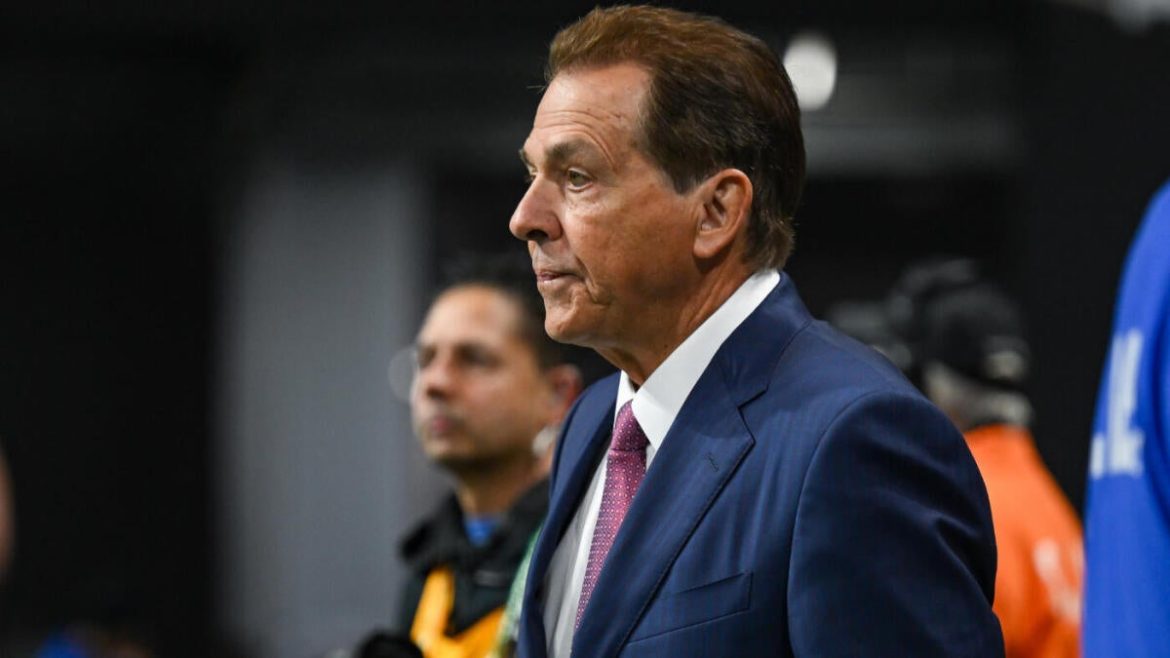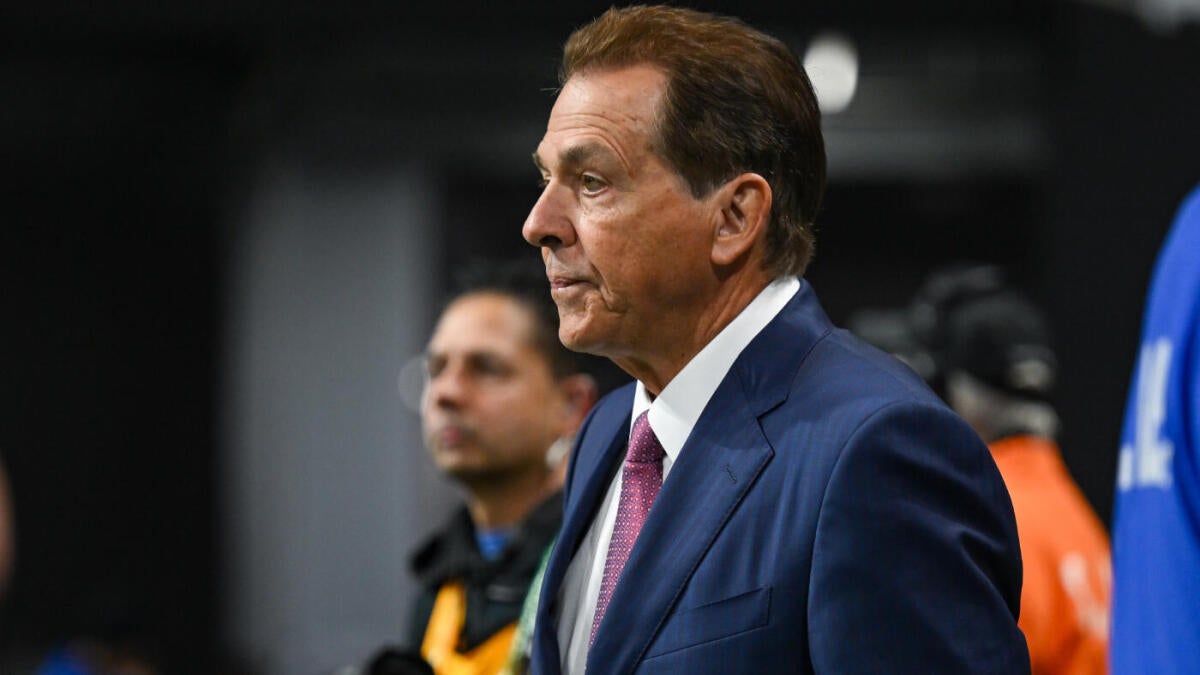Nick Saban and President Trump’s Proposal to Reform College Sports: A Detailed Examination
The conversation surrounding the future of college athletics has recently been reignited by former Alabama football coach Nick Saban’s comments on President Donald Trump’s proposed presidential commission. This commission is intended to address the myriad challenges facing college sports, including athlete compensation, transfer rules, and regulatory reforms. Saban, widely respected in college sports, has expressed considerable skepticism about the necessity of this commission, prompting deeper reflection on what challenges college sports currently face, the role of such a commission, and potential pathways to reform.
The Current Climate of College Athletics Reform
College sports, particularly football and basketball, have been under intense scrutiny due to ongoing debates about player compensation, transfer policies, and the NCAA’s regulatory framework. The rise of Name, Image, and Likeness (NIL) rights has changed the landscape of amateur sports, empowering athletes to monetize their personal brand but also introducing complexities in fairness and regulatory oversight. Additionally, ongoing lawsuits and legal pressures such as the House v. NCAA case highlight the need for structural changes. These conflicts have fueled discussions at all levels—from athletic departments to political halls—about how to balance athlete welfare, educational integrity, and the commercial interests of collegiate athletics.
President Trump’s announced interest in addressing these issues via a presidential commission signals an effort to provide a federally backed framework to resolve deep-rooted problems. The commission, potentially co-chaired by Nick Saban and Texas billionaire Cody Campbell, aims to tackle NIL guidelines, transfer portal rules, and the broader governance of college sports.
Nick Saban’s Position: Questioning the Need for a Commission
Despite being considered for a prominent leadership role in this prospective commission, Nick Saban has publicly expressed reservations about its necessity. His key points include:
– Uncertainty About the Commission’s Mission: Saban admits he knows little about the exact mandate or structure of the proposed commission. This lack of clarity seems to contribute significantly to his hesitation.
– Belief That the Issues Are Already Well-Known: Saban articulated that many stakeholders are already aware of the fundamental problems with college sports and the reforms needed. From his perspective, convening another commission might simply prolong debates without delivering practical solutions.
– Focus on Identifying and Addressing Issues Directly: He emphasizes the importance of directly tackling the specific challenges faced by college athletics rather than bureaucratic postponements. For Saban, understanding “what the issues are” and deciding “what to do to fix them” is more critical than assembling a new panel.
– Acknowledgement of President Trump’s Interest: Saban recognizes Trump’s genuine interest in college sports, noting his public statements and involvement, yet remains cautious about the effectiveness of such top-down initiatives.
Saban’s comments, often echoed in media appearances and charity events, reveal a nuanced skepticism: while willing to help improve college athletics, he is unsure if a commission is the most effective instrument for change.
Contrasting Perspectives on the Commission’s Purpose
Proponents of the commission, including President Trump and some sports advocates, view it as an opportunity to marshal resources, unify stakeholders, and expedite reform across the fragmented landscape of college sports governance. The commission aims to:
– Provide clear and consistent standards for NIL activities to prevent exploitation and inequality.
– Reform transfer rules to balance athlete mobility with team stability.
– Target systemic issues that may be unaddressed due to the NCAA’s decentralized governance.
However, critics like Saban and others worry that the commission risks duplicating existing efforts by the NCAA, delaying actionable solutions, or lacking adequate authority to enforce sweeping changes. This concern emerges from past experiences where lengthy commissions or committees produced recommendations taking years to implement, sometimes failing to achieve meaningful progress.
Practical Considerations for Reforming College Sports
Regardless of the commission’s formation, several reforms appear necessary based on Saban’s and others’ reflections on college athletics:
– Clarification and Streamlining of NIL Regulations: As athletes gain more commercial opportunities, clear guidelines are needed to ensure fairness and transparency.
– Transfer Portal Adjustments: Finding a middle ground between athlete freedom and program continuity is essential, possibly involving limits on transfer timing or eligibility.
– Enhanced Athlete Support and Welfare Programs: Colleges must prioritize mental health, education, and long-term career planning amid the evolving sports industry.
– Stronger Governance Mechanisms: Whether via NCAA reforms or external bodies, governance that can swiftly address issues without undue politics is vital.
Saban’s position implicitly calls for solutions grounded in practical understanding and stakeholder engagement rather than bureaucratic commissions with uncertain mandates.
An Impactful Conclusion: Navigating Change with Purpose and Clarity
Nick Saban’s skepticism about the need for President Donald Trump’s proposed commission serves as a crucial reminder that reform in college athletics requires more than symbolic gestures or additional panels. It calls for focused, transparent, and actionable strategies targeting well-identified problems. While a commission could facilitate dialogue and unify voices, it risks becoming an added layer of delay without clear goals or decisive power.
For genuine progress, stakeholders must clearly define the scope of necessary reforms, streamline implementation processes, and continually prioritize the welfare and rights of student-athletes. As the landscape of college sports continues to shift rapidly, a balance between thoughtful deliberation and timely action will determine the future vitality of collegiate athletics.
In this evolving debate, Saban’s insights emphasize that knowing the problems isn’t enough—we must commit to practical solutions that break through inertia and build a fair, sustainable playing field for the next generation of athletes.





